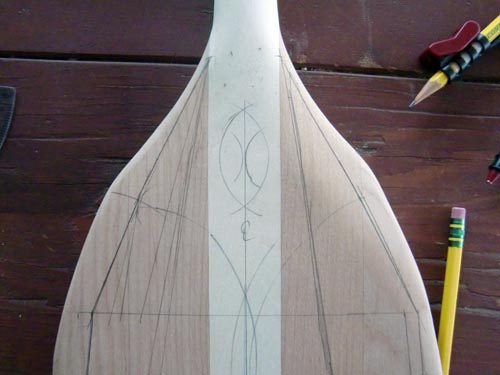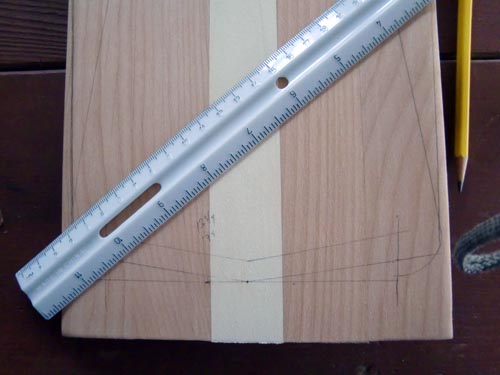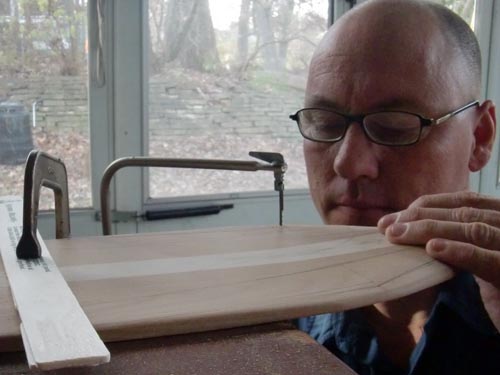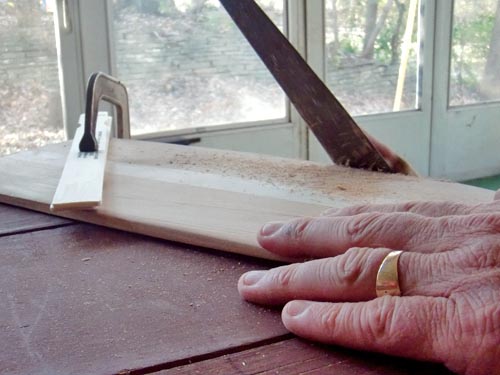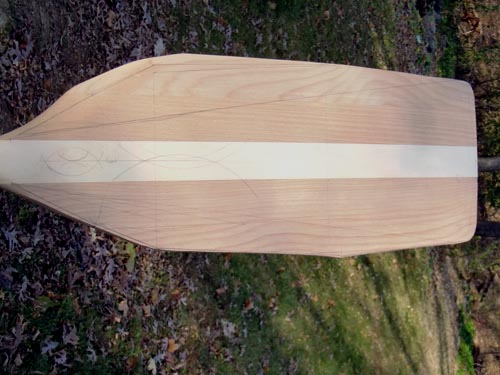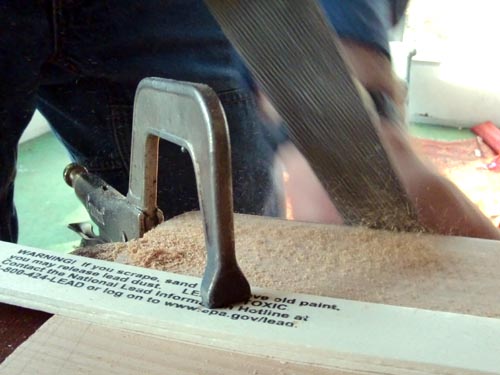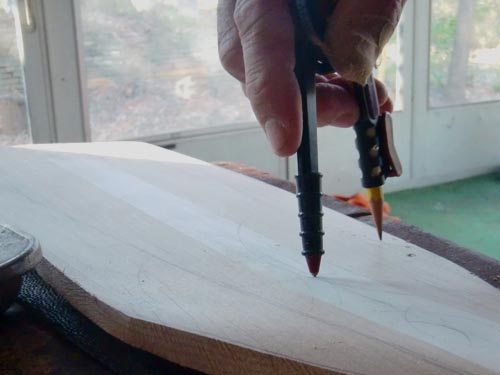Once in a while I work with a paddle manufacturer to create new designs. Apparently I’m okay at it, since the last one I worked on became one of their best sellers.
The trick here is to create something that is a good value, but still has what I’d want in a nice entry-level paddle. It’s actually a little more fun than creating a high-end paddle…it’s more challenging when you have limitations to work with. In this case, blade width.
Once I laid out the basic pattern, I do a rough cut with a jigsaw, leaving the line for reference. I could use a band saw at the shop, but I’m not a big fan of power tools since the Great Table Saw Incident of 2005. Besides, using a big noisy thing to trim a few little chunks of wood off a paddle blank seems overkill.
After the rough cut I dig out the patternmaker’s rasps. Nicholson used to make the best rasps, the second cut No. 49 and the smoothing file, the No. 50. Nicholson made the Rolls Royce of rasps and had since the 1890s, but their quality has gone down in recent years. Some say a batch of them were outsourced to China, and that sullied their name somewhat.
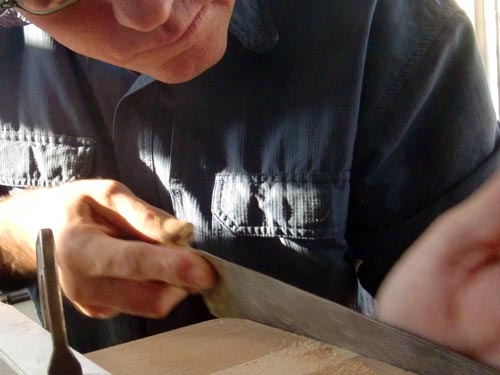
I bought a new set of rasps last year, nice Japanese ones that are, in many ways, better than the Nicholsons. They work great. Love ’em.
After the first cuts and rasping on one side, it’s time for more smoothing with the No. 50. Although I lay out the basic shape on both sides, I only shape one side at a time. It’s easier to make them symmetrical if you get to the final shape on one side, then use a compass to transfer the lines from one side to the other.
More later…
Canoelover

